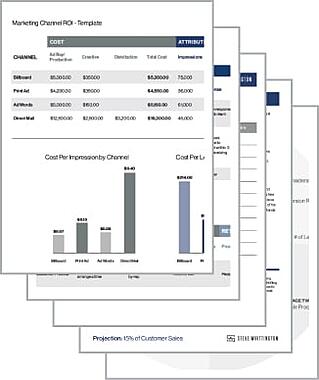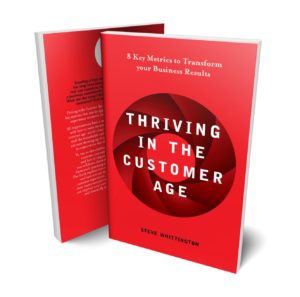
Understanding the New Normal
I am not sure what day this month it was for you when the world changed, for me it was March 11th. My wife who is a physician, gathered two other physicians (one an infectious disease specialist the other on the federal COVID-19 response team) and hosted an “intervention” with me to get my thinking aligned with the new reality that was about to descend upon us.
They wanted me to convince the organizations which I am part of, and organizations which I have influence upon; to proactively act. Specifically, the child care center for which I am President of the Board was their main concern.
This month I had planned to do my pivot from an executive working in the business, to a professional board member, speaker/workshop facilitator and back to my true love of being an entrepreneur. Well this happened, a little less out of desire and more out of necessity, along with emergency board meetings, daily management team and advisory briefings, plus speaking engagements and client work cancellations. These last two weeks have felt like a long year! I would be inauthentic if I did not admit at times I was spinning or was despondent or near the beginning naively unconcerned. That said, through it all with all the organizations and clients I am involved with, one common thread emerged. Creating a way forward.
As such this for this month’s email I have complied resources that I have been sharing with boards, clients and leadership teams to help you set your priorities and create clarity for your requirements. Now more than ever your communication is your customer experience and your employee experience. The physical interaction with your customers and staff in a shared space and face to face meetings is gone or severely altered . It is time, to get to work on creating a new normal for moving forward.
To that end I have been lucky in my network and the resources I can draw on:
On LinkedIn https://www.linkedin.com/in/ernestbarbaric/ an executive coach shares a daily leadership challenge to help leaders reach higher, focus and be their best version in this trying time.
Additionally the Stoic Philosophy has been gaining a lot of attention as an anchor to attach to in today’s whirlwind of headlines; the best article I have found is as follows:
Lastely, I am here to help and hopefully you find these articles useful to your organization.
This month’s roundup includes:
- Five Core Requirements for a COVID-19 Communication Strategies
- Four Pillars of Virtual Sales and Marketing: Creating the New Normal
- Marketing and Growth Lessons for uncertain times
Stay well,
-Steve
Five Core Requirements for a COVID-19 Communication Strategies
Having a formal communication strategy for staff and customers used to be the domain of large organizations that had specialists in this area. Mid-sized firms decentralized with HR, marketing, and sales managing this function for their respective responsibility areas. Small businesses generally just have the owner/operator filling all these roles. No matter your organization size, today you need to have a formal communication plan for COVID-19.
To to do this, there are five core areas that need to be developed/enhanced:
- Create a steering committee for determining all messaging
- Establish baseline requirements for messaging
- Create a COVID-19 central source of truth
- Establish a messaging cadence
- Ensure multi-channel cascading and consistency
Read more here
Four Pillars of Virtual Sales and Marketing: Creating the New Normal
Businesses around the world are operating in an unprecedented time due to the global coronavirus health crisis. Retail and public locations are being shut down and face-to-face services are suspended. In some industries, sales are sharply declining as people stay at home and cut spending due to caution or necessity.
But the reality is that your business must go on: you need to keep bringing in leads and making sales. And your customers will still need your product and service – if not now, then eventually. To navigate through this new reality of conducting business, you must adapt your marketing strategy to this new normal. There is no more store front or show room. Salespeople can no longer make in-person contacts or welcome walk-in customers. But there are key ways you can continue to generate leads, nurture your contacts and create connections (and sales) with your customers. Virtual contact marketing will be the new normal.
There are 4 key tenants of this new marketing strategy, each with a few main tactics within them.
- Your Website
- Consistent Email Communication
- Community Engagement (B2C) or Integrated Sales Campaigns (B2B)
- Enhanced Digital Customer Journey
Read more here
Marketing and Growth Lessons for Uncertain Times
I would honestly say this is a must read for anyone, while there is mountain of information to dive into, the headline is that it delves into past recessions and crises and compares the actions and outcomes of organizations. The results are illuminating.
A Harvard Business Review(HBR) studyof 4,700 public companies looked at the three years before, during, and after recessions. They divided companies’ responses—their “driving” strategies—into four categories:
- Prevention.A focus on cost cutting—every decision is viewed through a loss-minimization lens. They do more of the same with less, often lowering quality and customer satisfaction.
- Promotion.A heedless optimism that ignores the gravity of the situation and early warning signs. Companies in this category add features when customers desire greater value.
- Pragmatic.A haphazard combination of prevention and promotion characteristics. These companies tend to over rely on reducing the number of employees.
- Progressive.These companies get the prevention-promotion balance right by evaluating every aspect of their business model—making near-term changes that reduce costs nowandafter demand returns (unlike layoffs).
It is interesting what the numbers tell.
Furthermore take your buyer personas and throw them out the window there are only four right now:
A psychological segmentation divides buyers into four categories:
- Slam-on-the-brakes.The hardest-hit segment, which may reduce, delay, or eliminate spending. It includes lower-income buyers and high-anxiety buyers of all wealth levels.
- Pained-but-patient.The segment with near-term anxiety but a positive long-term outlook. This is often the largest segment. Buyers economize across all areas. More bad news may push them into the slam-on-the-brakes segment.
- Comfortably well-off.The segment that continues buying atalmostthe same level, with some additional selectivity about purchases. It’s made up mostly of wealthy consumers.
- Live-for-today. A segment that skews young and urban, with a focus on experiences over stuff. They are generally unconcerned about savings, though they may delay major purchases.
Lots more to dive into….
Read more here
Downloads Available

Whether you are looking to map your customer journey, build customer profiles, set goals or conduct marketing channel ROI, check out the expanding set of tools available:
Steve’s first book Thriving in the Customer Age – 8 Key Metrics to Transform your Business Results teaches about the customer journey and provides a guiding framework spanning all stages of the customer experience. The book explains how every metric impacts an organization and how leaders can utilize each metric to create continuous improvement in their customer experience. Everyone knows the customer is the most important part of a business. This book provides the tools to improve an organization’s customer experience and drastically transform business results.
If you are looking to take your customer experience to the next level let’s connect!

